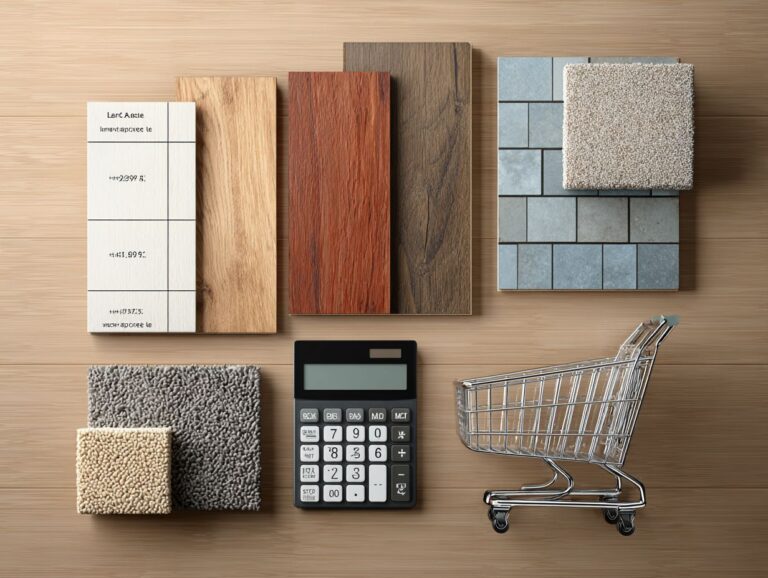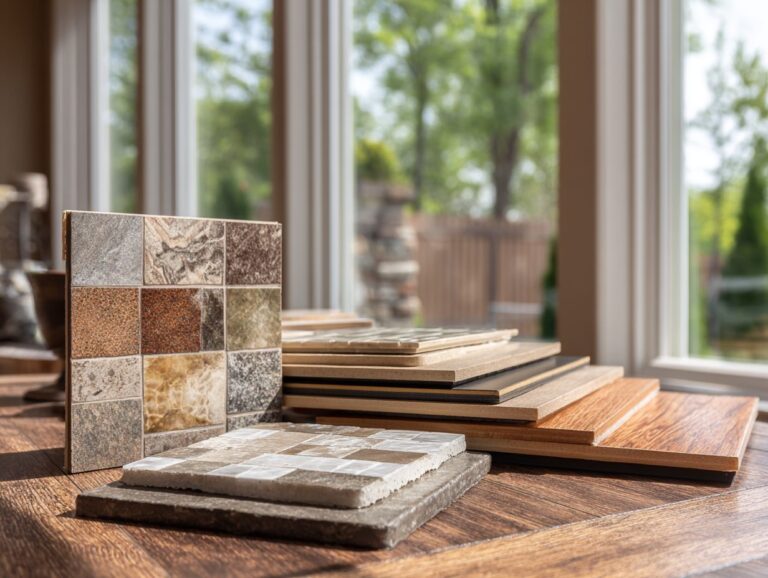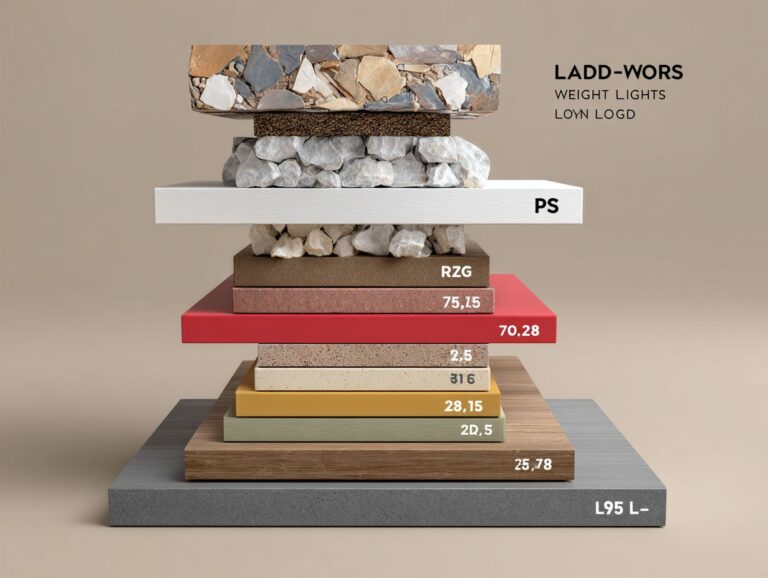Home Office Flooring – Chair Mats and Ergonomics
Make your home office more efficient by choosing the right flooring, starting with chair mats. Brands like Floortex and Cleartex provide exceptional floor protection for your office chair, ensuring durability and effortless movement. You can find these mats on Amazon.com. They protect your floors and improve your ergonomic arrangement. This article will look at how chair mats help make your workspace more comfortable and effective.
Key Takeaways:
Contents
- Types of Chair Mats
- Benefits of Using Chair Mats
- Ergonomics in the Home Office
- Home Office Ergonomics Data
- Choosing the Right Chair Mat
- Installing Chair Mats
- Maintaining Chair Mats
- Frequently Asked Questions
- Can I use any type of chair mat on my home office flooring?
- What are the benefits of using a chair mat in a home office?
- How do I choose the right size chair mat for my home office?
- Can a chair mat improve my ergonomics at my home office?
- How often should I clean my chair mat?
- Can I use a chair mat on top of a carpet protector?
Importance of Flooring in Home Offices
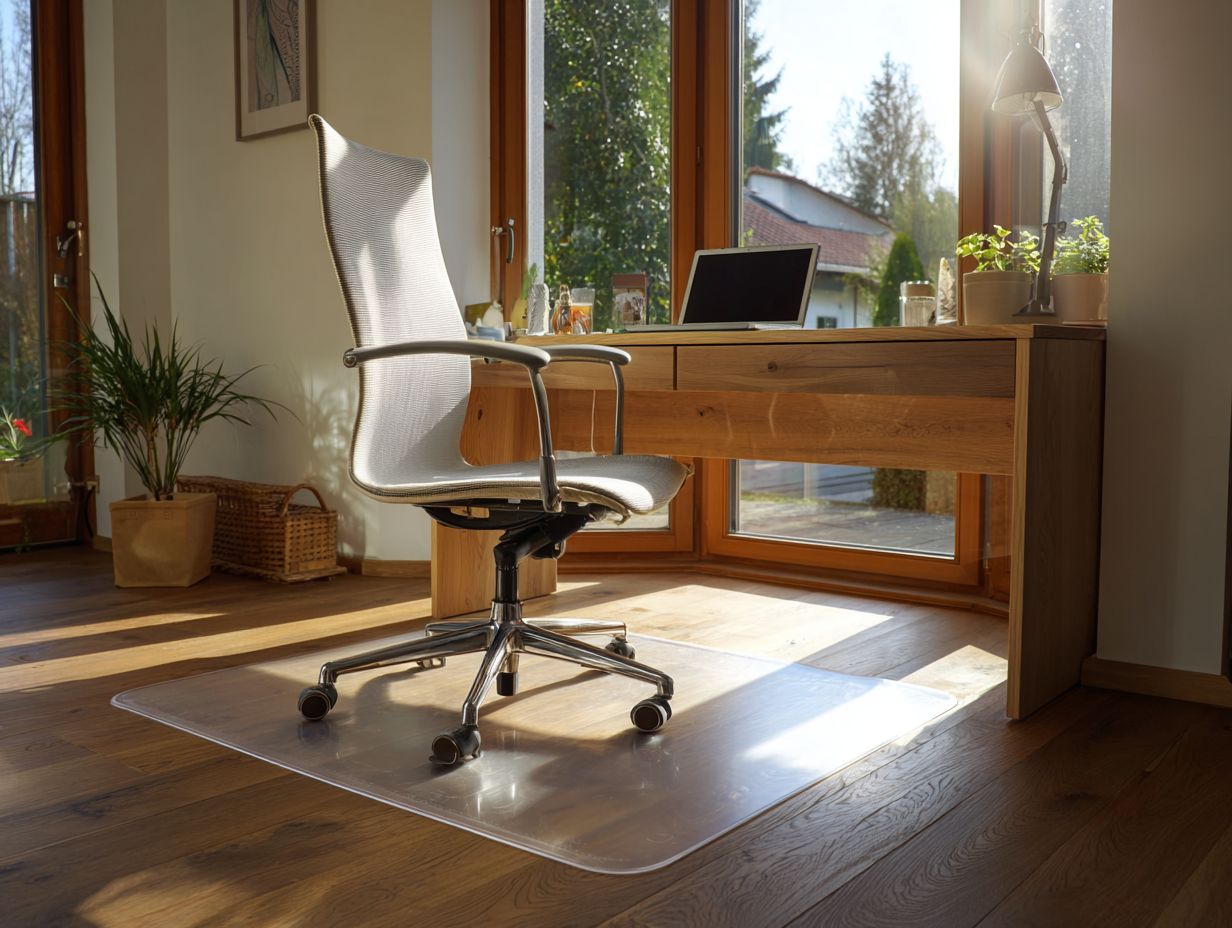
Quality flooring can make the workspace better by reducing strain on the body and helping people concentrate over extended periods.
Different flooring types significantly impact office functionality and comfort. For example, carpet tiles have a gentle texture, making them comfortable to walk on and reducing noise, which results in a quieter workspace.
On the other hand, hardwood floors lend a professional aesthetic and are easy to clean, but might be harder on the joints if you stand for extended periods. Consider using an anti-fatigue mat with hard surfaces to promote comfort while standing.
Office chairs with wheels perform better on smooth surfaces like laminate or hardwood, allowing for easy movement and accessibility.
Overview of Chair Mats
Chair mats serve as a protective barrier between your office chair and flooring, preserving the integrity of both surfaces over time.
These mats protect carpets and wooden floors from harm, so they are essential for any work area.
For example, think about a high-density polycarbonate mat, which is very durable and gives a smooth surface for easy movement. When choosing a chair mat, it’s beneficial to select one that matches your flooring type-carpet mats have thick cleats for grip, while hard floor mats are flat for even surfaces.
Choose mats that come with a warranty, as this helps guarantee they last a long time and are well-made.
Types of Chair Mats
Knowing about the various types of chair mats helps you choose the right one for your floor and how you work.
Polycarbonate Chair Mats
Polycarbonate chair mats are known for their strong and long-lasting nature, which makes them perfect for busy office spaces.
These mats typically come in varying thicknesses, such as 1/8 inch, 1/4 inch, and even thicker options, which provide superior stability.
For instance, the Cleartex Ultimat at 1/4 inch thick is specifically designed to resist cracking and curling while seamlessly gliding over carpets or hard flooring. Their clarity allows for unimpeded visibility of flooring, preserving aesthetics while protecting surfaces.
This mix of stability, durability, and flexibility makes polycarbonate mats a good choice for both professional and home office setups.
Vinyl Chair Mats
Vinyl chair mats offer a cost-effective solution for floor protection while providing a range of stylish options to complement any home office decor.
These mats improve visual attractiveness and are made from eco-friendly materials like BioPVC, which lowers environmental harm.
Their strength makes them able to handle frequent use and last for years.
On carpets, vinyl mats lower the risk of friction damage, while on hard surfaces, they provide excellent grip to prevent slipping. Understanding the benefits of different vinyl materials, such as those used in rigid core vinyl flooring, can further enhance your knowledge of durable and effective flooring solutions.
To get the most out of your mat, make sure it fits your workspace properly, giving your chair enough space to move freely.
Carpet Chair Mats
Designed specifically for use on carpets, these mats help distribute weight evenly, ensuring stability and protecting the carpet fibers from wear.
When selecting a carpet chair mat, consider the thickness for optimal protection. Advantagemat offers 1/4-inch thickness, ideal for medium-pile carpets, while Evolutionmat features a thicker 1/2-inch option, perfect for plush carpets.
Look for grip designs; some mats have studded backs to prevent slipping, while others use a smooth surface for ease of movement. These features keep your mat safe for your chair and carpet, making your workspace more comfortable and durable.
Wood Chair Mats
Wood chair mats provide a sophisticated touch while offering protection and stability for rolling office chairs on hardwood floors.
These mats protect surfaces from scratches and improve the look of your office.
For instance, Vitrazza offers high-quality glass chair mats that blend seamlessly with modern interiors, reflecting light and creating a spacious feel. Alternatively, you can find beautiful bamboo options that bring warmth to any workspace.
Each of these materials has unique benefits; glass is durable and easy to clean, while bamboo is sustainable and visually appealing. Both options improve the look while keeping their practicality.
Benefits of Using Chair Mats
Using chair mats offers many advantages that increase the lifespan of your floors and make your workspace more comfortable.
Protection for Flooring
Chair mats significantly reduce wear and tear on flooring, preventing scratches and indentations from office chairs.
Statistics show that using a chair mat can reduce floor damage by up to 80%, particularly on hardwood and laminate surfaces.
A polycarbonate chair mat guards the floor and allows chairs to roll easily, increasing the lifespan of both the floor and the chairs. Users report that, after six months of use, mats have preserved their floors free of scratches compared to unprotected areas.
Tools like the ‘Deflecto Chair Mat’ are popular for carpeted spaces, while options like ‘Lorell’s Polycarbonate Mat’ are favored for hard floors, combining durability with ease of movement.
Improved Mobility
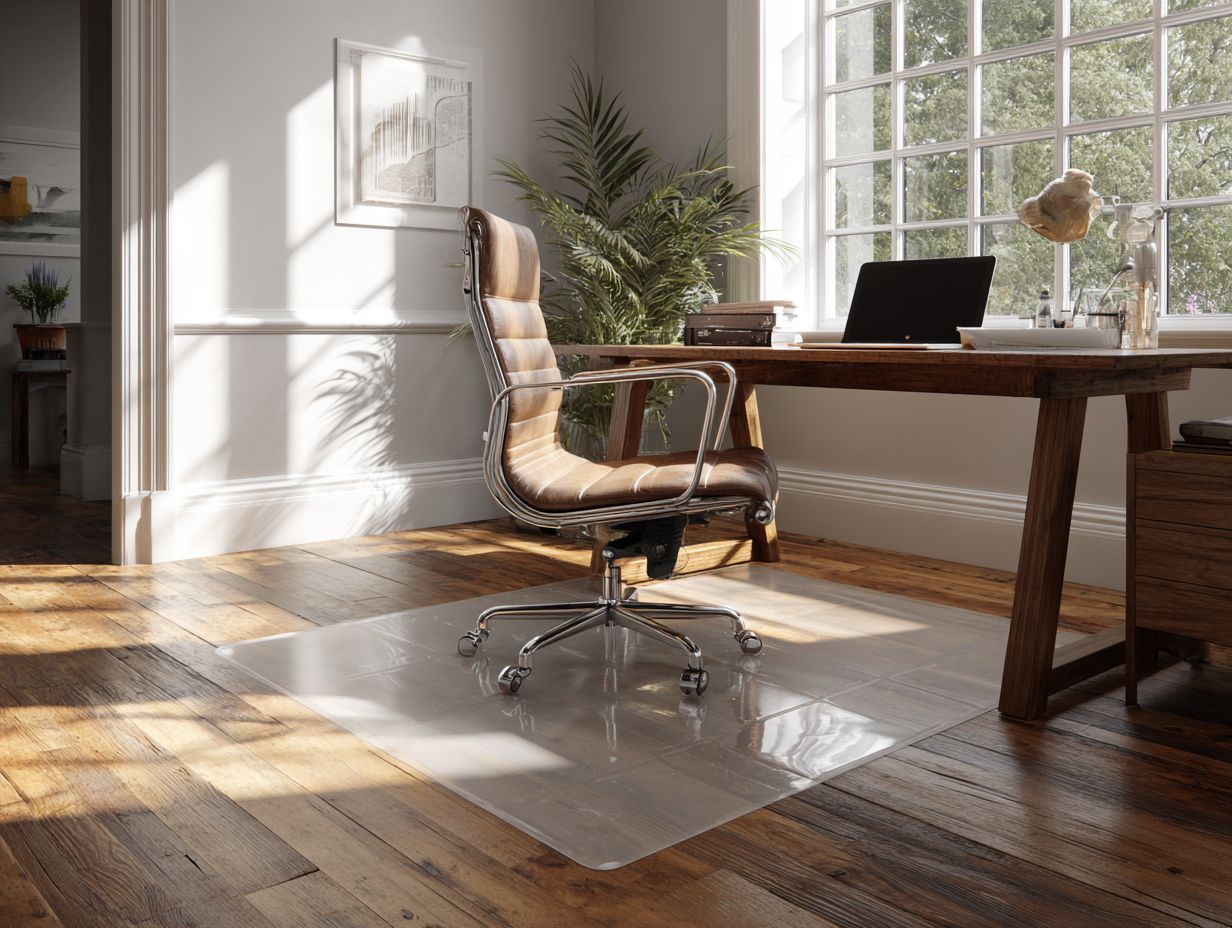
With a chair mat in place, mobility increases by up to 50%, allowing for smoother movement and reduced strain on both the user and the floor.
This improvement is especially helpful during long work hours, as it reduces tiredness by removing obstacles.
High-quality mats, such as the BALT Heavy-Duty Chair Mat or the Lorell Clear Chair Mat, feature a textured surface for better grip and stability. Installing a chair mat also protects flooring from scratches and wear, preserving aesthetics and value.
To get the best results, make sure the mat fits your workspace well. A bigger mat allows for more movement, improving comfort and mobility as time goes on.
Ergonomic Support
Chair mats can contribute to ergonomic support, reducing pressure points and fatigue associated with prolonged sitting.
To maximize comfort, consider incorporating an anti-fatigue mat alongside your chair mat.
For instance, the Imprint Cumulus pro offers a cushioned surface that promotes better posture and reduces foot fatigue, while the Gorilla Grip Anti-Fatigue Mat provides excellent support with a non-slip surface.
These mats allow for easier movement and better circulation, especially during long hours of desk work. Using these mats improves your ergonomic setup and supports better posture and comfort all day.
Ergonomics in the Home Office
Using ergonomic methods in your home office can greatly increase comfort and efficiency.
Home Office Ergonomics Data
Home Office Ergonomics Data
Ergonomic Statistics: Remote Work Transition
Ergonomic Statistics: Ergonomic Awareness
Ergonomic Statistics: Workstation Adequacy
Ergonomic Statistics: Equipment and Lighting
The Home Office Ergonomics Data reflects the shift to remote work and its impact on ergonomic practices. The information covers important topics such as moving to remote work, understanding ergonomics, the need for proper workstations, and equipment problems. It discusses the challenges and ways to improve home office setups to increase productivity and health.
Remote Work Transition shows a significant shift, with 71% of employees working from home by December 2020. Yet, only 54% wish to continue, indicating potential dissatisfaction or challenges with home setups. This gap suggests that while remote work offers flexibility, it may lack adequate ergonomic support.
Ergonomic Awareness is low, with only 20% of employees know what ergonomics means. However, 81% recognize its importance for productivity, highlighting a need for education on ergonomic practices to improve workplace wellness and efficiency.
- Workstation Adequacy: 25% of employees face workspace difficulties, underscoring the need for ergonomic improvements. While 58% have office chairs, a significant 27% use dining chairs, which may not provide adequate support, leading to discomfort or health issues over time.
- Equipment and Lighting: 57% of employers do not provide necessary equipment, leaving employees to manage their setups potentially inadequately. 52% have monitors set too low, contributing to poor posture, while 17% experience glare issues, affecting comfort and productivity.
Overall, the data highlights a critical gap in ergonomic support for remote workers. With remote work continuing, it’s important for employers and employees to work together on creating comfortable home offices. This might include providing the right equipment, teaching good ergonomic practices, and fixing workspace problems to improve productivity and health.
Understanding Ergonomics
Ergonomics is about creating workspaces that prioritize comfort and effectiveness, customized to fit the way a person works and moves.
In a home office setup, applying ergonomic principles can lead to significant improvements in productivity and well-being.
Begin with an adjustable chair that promotes proper posture, allowing your back to maintain its natural curve. Position your desk so that your monitor is at eye level, preventing neck strain.
Use a keyboard and mouse designed for comfort-think about split keyboards or vertical mice to lessen wrist discomfort.
Remember to take regular breaks, using tools like the Pomodoro Technique to balance work and rest effectively.
Key Ergonomic Principles
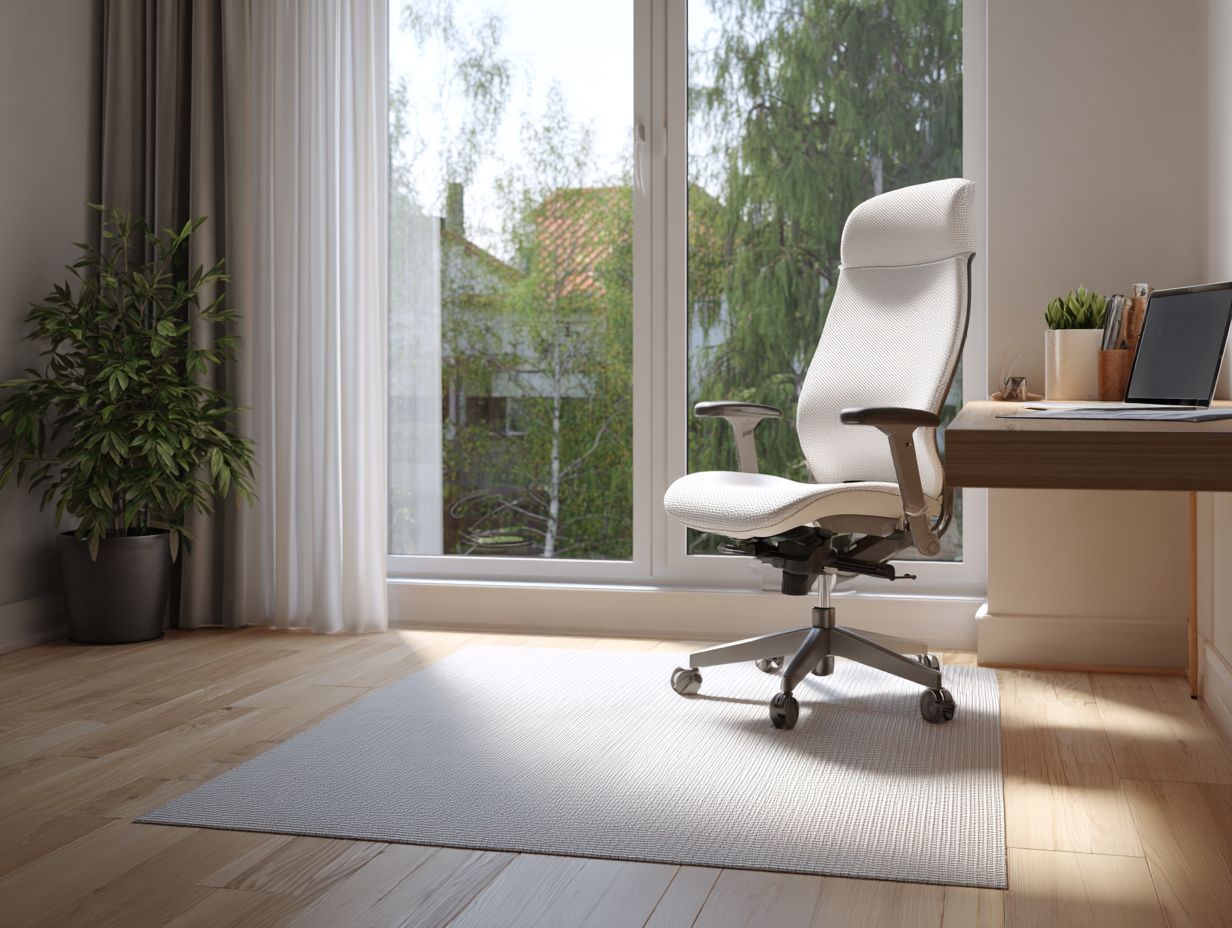
Adjusting your desk and chair to fit ergonomic standards can greatly improve how effectively you work.
Consider these five essential ergonomic principles for your home office setup:
- Desk Height: Your desk should allow your elbows to rest at a 90-degree angle when typing. Use adjustable desks or risers if necessary.
- Chair Adjustment: Make sure your chair supports your lower back. A chair with adjustable height and lumbar support is ideal.
- Monitor Position: Position your monitor at eye level, about an arm’s length away, to reduce neck strain. Use monitor stands if required.
- Keyboard and Mouse Placement: Keep them at the same level, with your wrists straight. A keyboard tray can help achieve this.
- Lighting: Make the most of daylight while cutting down on screen reflections. Use adjustable lamps for additional lighting, preventing eye strain.
Choosing the Right Chair Mat
When choosing a chair mat, think about the floor type, the mat’s dimensions, and what you need it for to make sure it fits your needs.
Considerations for Different Flooring Types
Different types of floors need specific chair mats to provide the best protection and work well, whether for carpets or hardwood floors.
For carpeted floors, opt for thick polycarbonate mats, which are sturdy and offer excellent durability, preventing wear and tear. On the other hand, for hardwood or tile floors, a thinner vinyl mat may suffice, as it provides adequate protection without being overly bulky.
Measure your desk area carefully; typically, a mat should extend at least 30 inches from the edge of your desk. Brands like Deflecto and Lorell offer reliable options that cater to both flooring types, ensuring your space remains protected and stylish.
Size and Shape of Chair Mats
The size and shape of chair mats are important for providing complete coverage and functionality, suited to your workspace arrangement.
To select the right mat, measure your workspace carefully, considering the dimensions of your desk and chair.
Standard sizes range from 36″ x 48″ for small areas to 60″ x 120″ for larger setups. Common shapes include rectangular mats for traditional desks and L-shaped mats to accommodate corner workspaces.
For example, a rectangular mat is ideal for a standard office desk, while an L-shaped option is perfect for a multi-desk environment. Make sure the mat is at least 1/4″ thick to protect it from damage.
Thickness and Durability
The thickness of chair mats affects how long they last and how well they work. Knowing this can help you save money over time.
Chair mats come in various thickness levels, generally ranging from 1/8 inch to 1/2 inch. A 1/8 inch mat is suitable for low-pile carpets and hard floors, while a 1/4 inch option provides a balance for medium pile carpets.
For high-pile carpets and heavy use, a 1/2 inch mat offers maximum durability. Picking the correct thickness helps your mat avoid cracks and lasts longer, protecting the floor beneath it.
For instance, if you have a home office with carpet, opting for the thicker 1/2 inch mat can prevent damage for years.
Installing Chair Mats
Putting in chair mats can be easy if you follow the right steps for them to work well and last a long time.
Preparation of the Floor
Proper floor preparation involves cleaning and ensuring the surface is level and free from debris to maximize chair mat effectiveness.
- Start by sweeping or vacuuming the area to remove dust and dirt. Then, inspect the floor for any protruding nails or screws, which can damage the mat and your chair.
- If necessary, use a level to check for any unevenness; floor leveling compound can fix minor dips.
- Wipe down the surface with a damp cloth to eliminate any sticky residues, ensuring optimal adhesion and longevity for your chair mat.
This complete preparation improves the mat’s function and also safeguards the floor beneath.
Proper Placement Techniques
Properly placing chair mats improves their performance. Pay attention to positioning and alignment for the best outcome.
To improve the placement of your chair mat, think about these tips:
- Place the mat under your desk to support both still and active movements.
- Make sure it covers more space than where your chair usually is, so you can move around easily.
- Align the mat with your primary work zone to reduce tripping hazards.
For example, if your workspace has an L-shaped desk, choose a mat that covers the entire area you traverse. Using a measuring tape helps you check that the mat fits your design perfectly.
Maintaining Chair Mats
Regular maintenance of chair mats extends their lifespan and ensures they function properly, reducing expenses related to floor damage and maintaining a pleasant office environment.
Cleaning and Care Tips
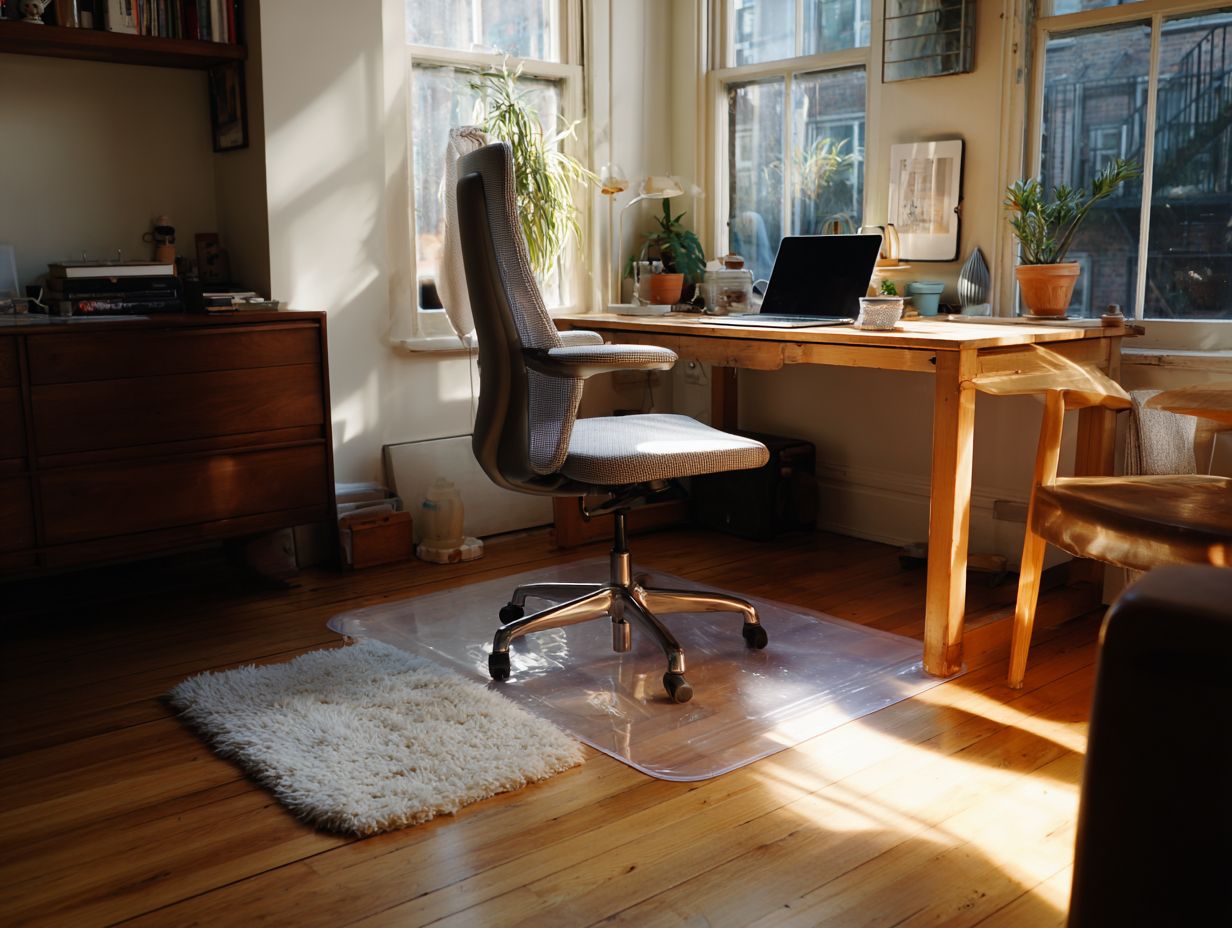
Routine cleaning and care of chair mats can prevent buildup and maintain their appearance, prolonging their usability.
- Begin by vacuuming the mat to remove loose dirt and debris, followed by a damp cloth for deeper cleaning.
- For resilient materials like polycarbonate, a mild detergent mixed with water can effectively cut through grime.
- For softer mats, such as those made from vinyl, avoid harsh chemicals to prevent damage; opt instead for a gentle dish soap.
- Using a chair mat spray regularly can make your mat shine and keep it clean, helping it stay in good condition for a long time.
Signs of Wear and When to Replace
Identifying signs of wear early can prevent costly damage to both chair mats and the underlying floor, ensuring a proactive approach to maintenance.
Common signs that indicate it’s time to replace your chair mat include visible cracks, curled edges, or dents that can’t be smoothed out.
If you find your chair gets stuck or catches when rolling, this is another clear indicator of wear. It’s advisable to replace the mat if these issues arise to protect your flooring.
For responsible disposal, consider recycling the mat at a local waste management facility or check with the manufacturer for return options.
Many stores also offer recycling programs for office supplies.
Frequently Asked Questions
Can I use any type of chair mat on my home office flooring?
No, it’s important to choose a chair mat specifically designed for your type of flooring. For example, if you have carpeted flooring, you’ll need a chair mat with grippers to prevent slipping and sliding. If you have hardwood flooring, a smooth surface chair mat is recommended to avoid scratching.
What are the benefits of using a chair mat in a home office?
Using a chair mat can provide ergonomic support and protect your flooring from wear and tear. It also makes it easier to move your office chair around without causing damage to the floor, and can improve the overall appearance of your workspace.
How do I choose the right size chair mat for my home office?
The size of your chair mat should be based on the size of your desk and the space you need to move your chair comfortably. Measure the area where your chair will be positioned and choose a mat that is at least a few inches larger than that measurement for optimal coverage.
Can a chair mat improve my ergonomics at my home office?
Yes, a chair mat can help improve ergonomics by providing a smooth and supportive surface for your chair to glide on. This can reduce strain and fatigue on your joints, especially if you have a hard or uneven flooring surface.
How often should I clean my chair mat?
It’s recommended to clean your chair mat at least once a week, or more frequently if it gets visibly dirty. Use a mild soap and water solution or a gentle cleaner specifically designed for chair mats. Avoid using harsh chemicals as they can damage the mat.
Can I use a chair mat on top of a carpet protector?
It’s not recommended to use a chair mat on top of a carpet protector as it can cause the mat to shift or slide around, creating a tripping hazard. It’s best to choose a chair mat designed for use on carpeted flooring for the most secure and stable fit.



